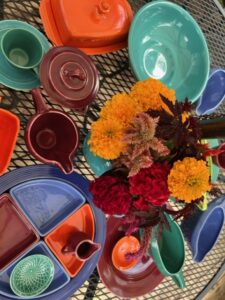 Starting a collection of objects, like dishes, can be considered materialistic but I find there are also spiritual advantages. Collecting can tell us a lot about our psychological and spiritual growth. I call them my dish lessons.
Starting a collection of objects, like dishes, can be considered materialistic but I find there are also spiritual advantages. Collecting can tell us a lot about our psychological and spiritual growth. I call them my dish lessons.
Once shopping in a California antique mall, I stumbled upon an Art Deco cream and sugar set. One piece was a brilliant red-orange and the other one mauve blue. The dish pattern is known as Harlequin, considered in the 1930s the poor man’s Fiesta. Although both were manufactured by Homer Laughlin, Fiesta was sold in high end department stores and Harlequin at Woolworth’s.
I did not buy the cream and sugar set, because we already had several and there was no room for extras in our tiny apartment. But back in New York, I couldn’t get it out of my mind, so I called the store, hoping the set could be shipped. It had already been sold.
I Was Addicted
I went on suffering from non-buyer’s remorse until I found a store that specialized in vintage dishes. There, I bought the creamer and sugar set I’d been coveting, plus a gravy boat in spruce green. These three pieces were totally without function because I could not afford to buy a whole set of any color. So I put them on a shelf in front of a travel poster with a castle in similar hues. It was a shrine to the country house of my dreams where one day I would indulge in full table settings with Harlequin dishes.
Two years later, we bought that country house. I began collecting in earnest, which worried my husband-to-be, for the house needed some work and he saw the dishes as an unnecessary expense. Still, the passion was on, so whenever I had a few dollars to spare, I bought a piece or two.
Finding My Dishes in all the Right Places
Harlequins were hard to find, though antique stores or eBay had occasional pieces. The vintage store was pretty pricey. When the clerk told me that a rare spruce teapot had come in, I had to turn it down. I was a teacher and that teapot was way over my budget. It would take seven years to find one again. On rare occasions, I would find a few pieces in a yard sale until I found a vintage dealer who became my main supplier.
She registered the dishes for our wedding and called me regularly whenever a new piece came in. I asked the dealer to call me at work rather than home because my husband was still groaning over the expense. Colleagues at the inner city school would giggle when it was announced that my “dealer” was on the phone. Addictions were a familiar problem there.
Twenty Years of Collecting
Now we have been in the country home for close to twenty years, and my husband has come to love the dishes. He thinks we should use all the different colors at once, believing as many do, that a riot of color is the essence of their charm.
Occasionally, I do that for a buffet, but for sit-down dinners I prefer a more disciplined color scheme. Part of metaphysical decorating is about the energy we get when our eyes move in a pleasurable manner. Choosing one dominant color and two or three accessory colors allows the eyes to move in a circle, a geometric form that energizes our subliminal beings.
The Soul of the Dishes
I feel the atoms in my cells jiggling when I am near all this pottery. I just know these dishes are alive. It is more than the intensity of the color. The proportions reflect the geometry of nature, especially the quintessential ratio of the beautiful—the golden mean. Art Deco is based on the geometry of nature, for it is a reinterpretation of classical motifs, particularly those of the Egyptians and Greeks.
Occasionally, I am drawn to Harlequin’s sister, Fiesta. Its shapes are more curvaceous.
Seriously, I just had to have a Fiesta gravy boat in medium green that looks like the womb of an earth goddess encased in a genie’s lamp, and I think it is fitting that gravy be served in a container that looks so beautifully pregnant.
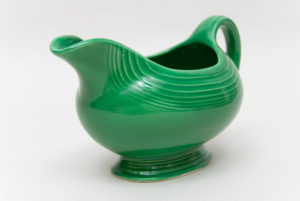
Dish Lessons – Learning to Let Go
The two pieces I especially prized were a marmalade jar and high-lip creamer—both of them rare, and pricey. I tucked them at the top of the China cabinet, lest they be damaged by my young grandchildren.
I also stashed away a bowl that still bore the original Woolworth’s price label of twenty-nine cents. My dealer told me the bowl would be more valuable if I never removed the label. That meant never using the dish. The irony of this mentality is that objects prized for their aliveness become less alive when hoarded. Metaphysically, objects lose energy when one puts them in storage and they are no longer in movement.
So I started taking the advice I often give to others—to get energy from our objects, we have to give up the fear of their loss. We also have to question what we are looking for from the objects we choose to have in our lives. As far as the dishes are concerned, I am reminded of a passage from the Tao Te Ching: “We shape clay into a pot, but it is the emptiness inside that holds whatever we want.”
So now all the dishes are out of “safe keeping,” and I encourage visiting children to use them. Recently I let them create a Halloween dinner. There was only one course: M&Ms in matching dish colors.
[1] Note that the large plates were never part of the original 1930-40’s collection. In 1979, Woolworth commemorated its 100th anniversary year by reissuing a modified Harlequin set. It changed its serving platter from oval to round. I got a few of these to use as buffet plates to eat in front of the TV. For this table setting, we were eating lobsters, so the size was perfect.
***
There are two parts to this website, The Lessons, which are more difficult in concept, and the blogs, which are lighter in nature.
Two Lessons that relate to this blog are:
XI. Finding Energy Through Our Relationships With Objects
Please note that my website allows you to leave comments at the end of the blogs but not at the end of each lesson. If you have a comment or question about a lesson, you may email me at ruta@rutas-rules.com
***
Harlequin Information/looking at the colors: http://www.dishog.com/DishogHarlequin.html
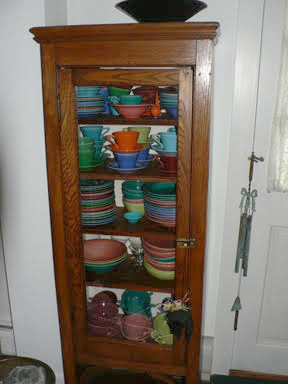
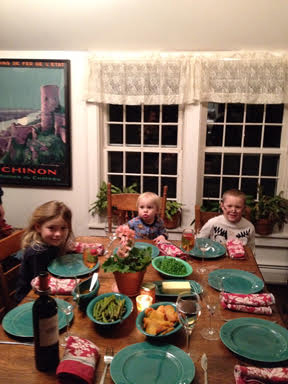
to the left.
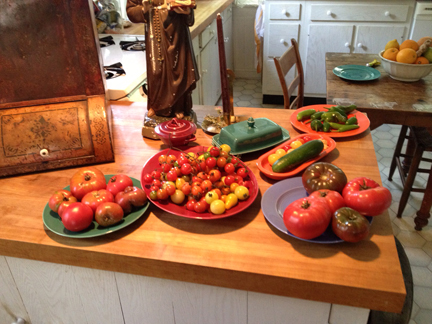
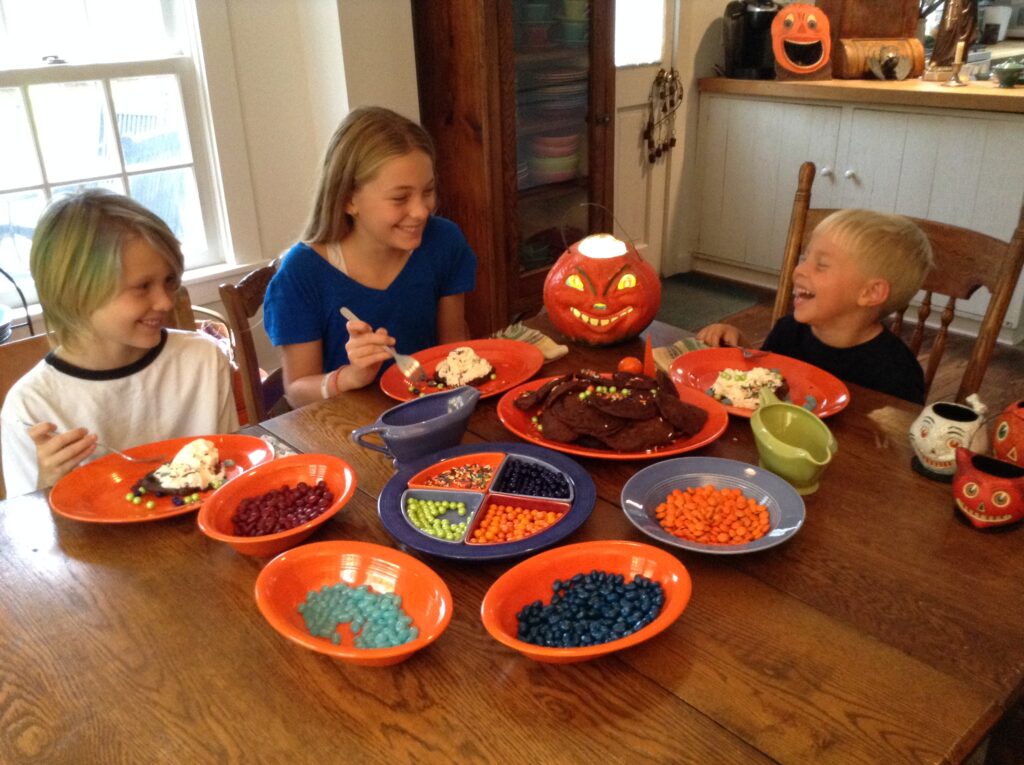
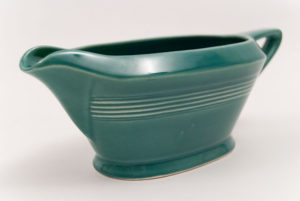
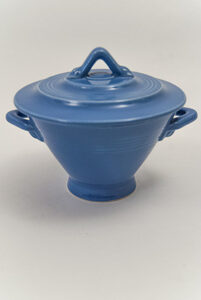
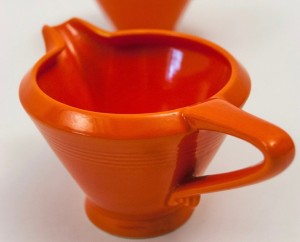
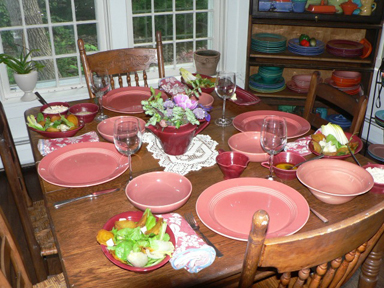
Leave a Reply